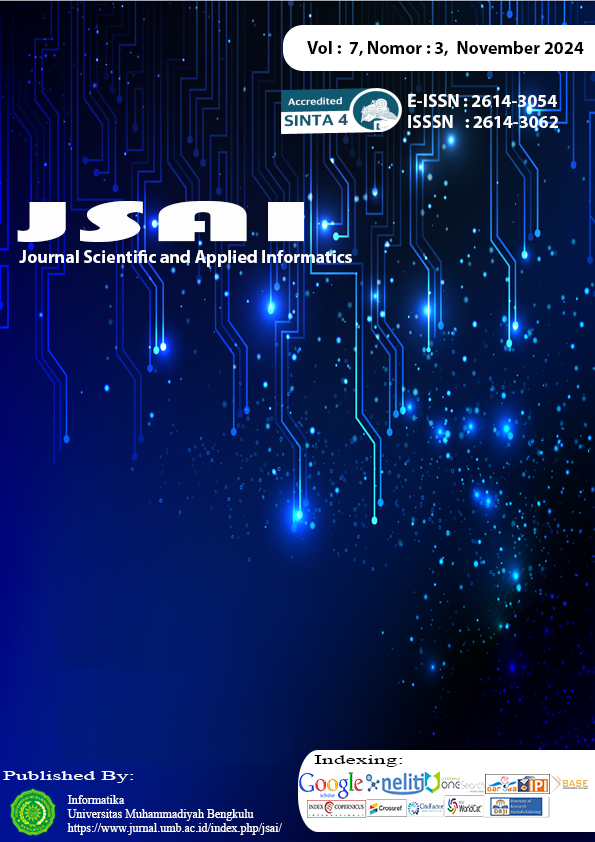Application of K-Means Clustering Algorithm on Labor Segmentation in Batam in the Manufacturing Sector
DOI:
https://doi.org/10.36085/jsai.v7i3.7209Abstract
This study aims to apply the K-Means Clustering algorithm in workforce segmentation in Batam in the manufacturing sector, which is one of the important industrial centers in Indonesia. In facing the challenges of increasing productivity and efficiency in this sector, segmenting the workforce based on certain characteristics is important to help companies manage human resources more effectively. K-Means Clustering algorithm is used to group workers based on variables such as Worker ID, Age, Education, Work Experience, Salary and Technical skills. The data used in this study comes from a manufacturing company in Batam with a significant number of workers. After going through the data preprocessing stage, the K-Means algorithm is applied to identify worker segments that have similar characteristics. The results of the research are that the research resulted in the grouping of workers in the manufacturing industry in Batam into 3 groups, namely C_0, C_1 and C_2. Then the number of workers in the manufacturing sector in Batam City is mostly in cluster C_0 in the category of beginner workers with a high school education level, C_1 in the category of middle workers for D3 and S1 education levels and C_2 in the category of senior workers with a S2 education level.
Downloads
Published
Issue
Section
License
Copyright (c) 2024 darmansah, Fitra Kasma Putra, Tomy Nanda Putra

This work is licensed under a Creative Commons Attribution-NonCommercial-NoDerivatives 4.0 International License.







